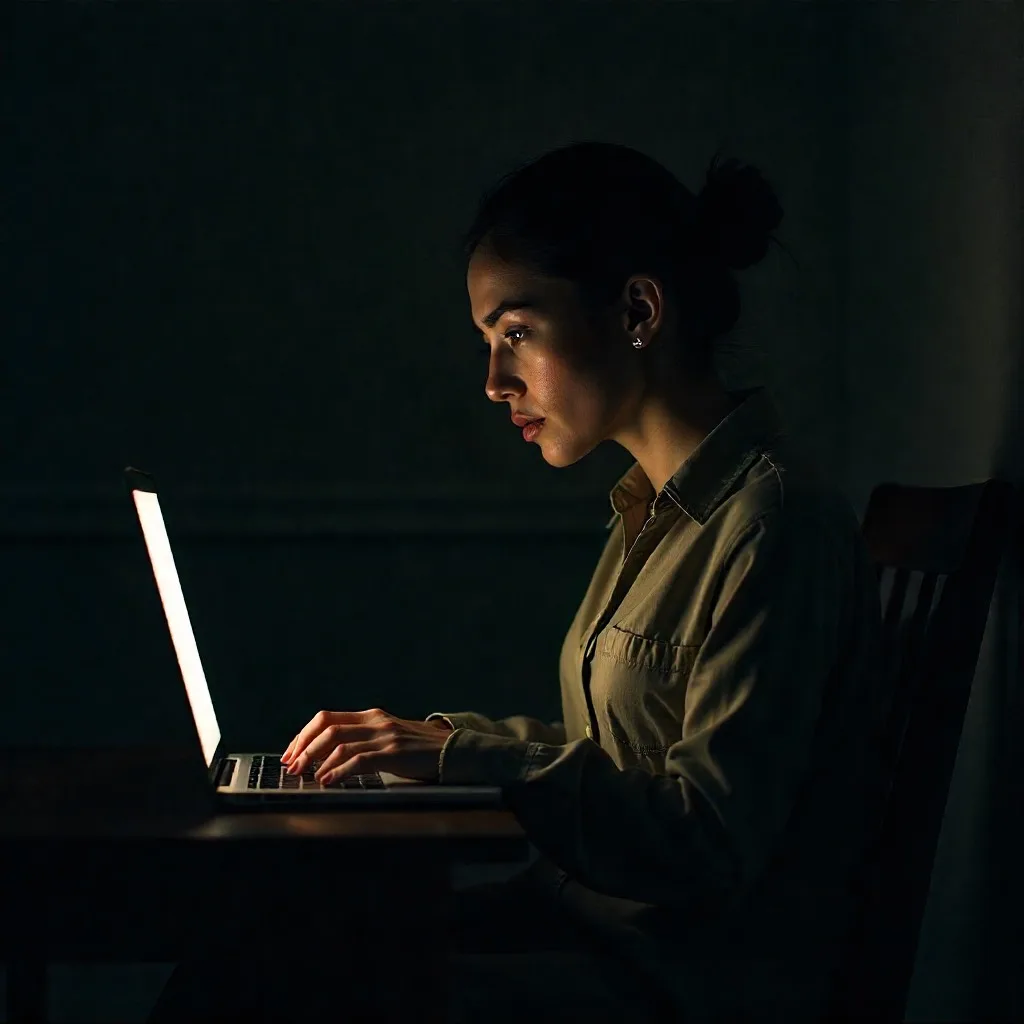The Rise of Spiritual Materialism
When Healing Becomes a Luxury Good
Crystals cost more than diamonds, manifestation has become merchandise, and enlightenment now comes with a price tag. Is spirituality the new luxury industry?
By Ami Jain
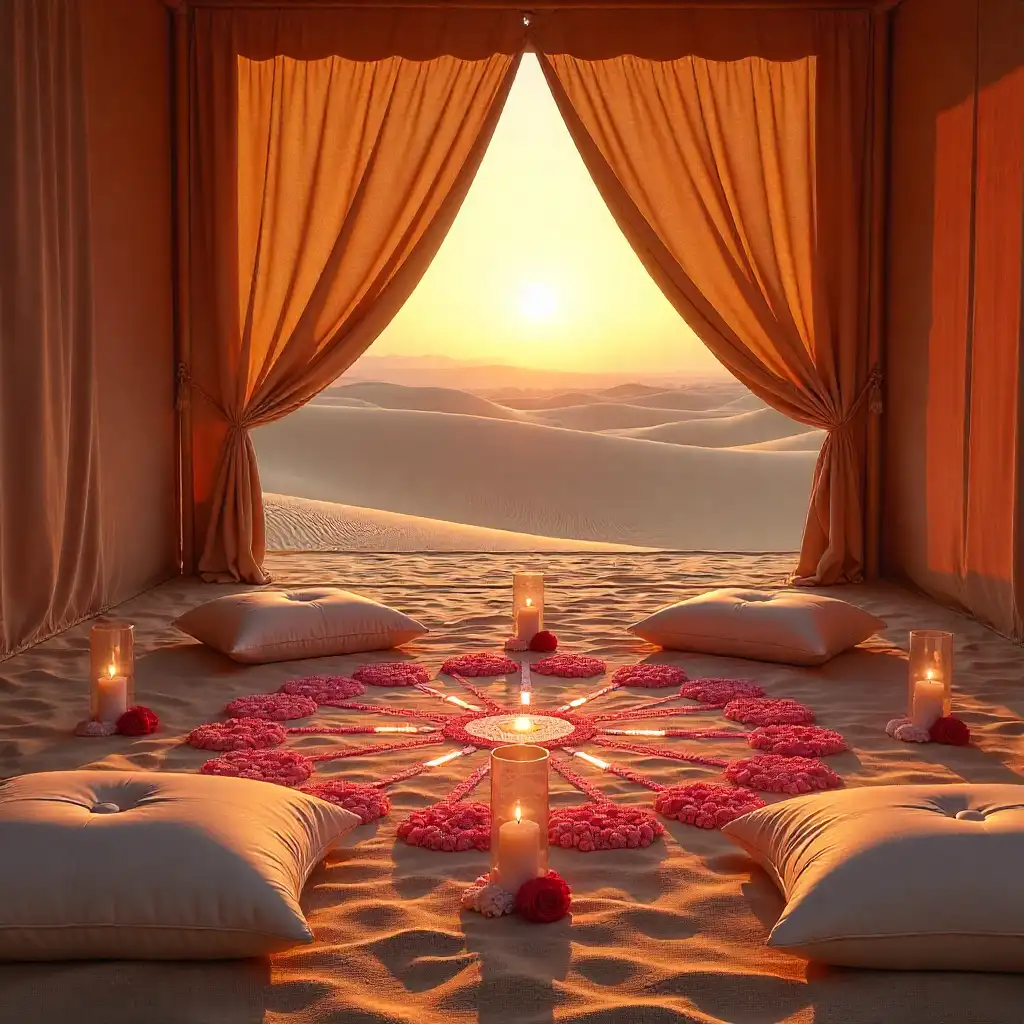
I’ll admit something uncomfortable: I own a $180 rose quartz face roller. I’ve attended a $350 sound bath in a luxury hotel. I have a collection of crystals on my windowsill that cost more than my monthly groceries. And last year, I paid 1,200 dirhams for a “chakra alignment session” that, if I’m honest, felt more like expensive theater than spiritual breakthrough.
I’m not proud of this. But I’m also not alone.
There was a time when spirituality meant disappearing from the world: retreating inward, renouncing attachment, seeking truth in silence. Today, it arrives in satin boxes with gold-foil branding, infused with jasmine-scented aura sprays and accompanied by a QR code linking to a guided meditation voiced by a celebrity. Healing is no longer hidden in Himalayan caves. It’s displayed on marble vanities and Instagram grids, hashtagged and beautifully lit.
Across the world, and especially in luxury capitals like Dubai, Los Angeles, and London, spirituality is being rebranded. Not as a sacred path, but as a lifestyle aesthetic. Sage bundles are sold beside designer candles. Crystals are no longer tokens of metaphysical belief; they are investment pieces with certificates of authenticity. Breathwork retreats cost more than a month’s rent. And the language of spirit – alignment, frequency, manifestation, energy—now circulates through influencers, brands, and billion-dollar wellness conglomerates.
We are witnessing the birth of something extraordinary and troubling: spirituality as a status symbol.
From Sacred to Sellable
Spirituality is no longer about withdrawal. It is about display.
Manifestation journals come in limited-edition leather with rose gold edges. Tarot decks are reimagined by fashion houses like Dior and Hermès. Crystal-infused water bottles promise “cellular awakening” for 450 dirhams. Even incense, once a humble prayer tool, now comes in hand-blown Murano glass holders retailing for the price of a flight to Bali.
Walk into any luxury mall in Dubai – Dubai Mall, Mall of the Emirates, City Walk and you’ll find entire boutiques dedicated to what I can only call “aspirational spirituality.” The Wellness Shop. Conscious Crystals. Higher Self Home. Names that promise transcendence but deliver aesthetics.

And people are buying. Not necessarily out of vanity, but out of longing.
Layla, 31, a marketing director in Dubai, describes her journey into spiritual materialism with surprising self-awareness. “I started buying crystals during the pandemic. I was anxious, isolated, desperate for something to believe in. The first one was a small amethyst for maybe 40 dirhams. Then selenite towers. Then chakra sets. Then custom pieces from boutiques. Before I knew it, I’d spent thousands. Did they heal me? I don’t know. But having them made me feel like I was doing something for my spiritual health. Like I was investing in myself.”
That phrase -“investing in myself” – is everywhere now. Self-care as capital expenditure. Healing as ROI. Enlightenment as asset accumulation.
Dr. Nadia Al-Rashid, a psychologist practicing in Dubai Healthcare City who specializes in wellness culture, sees this pattern frequently. “Clients come to me after spending enormous amounts on spiritual services and products, feeling emptier than when they started. They’re confused because they’ve done everything right: the crystals, the courses, the cleanses. But they’ve confused spiritual consumption with spiritual practice. You cannot shop your way to enlightenment.”
Yet the industry keeps growing. The global wellness economy reached $5.6 trillion in 2024, with the spiritual wellness sector – including meditation, mindfulness, and “metaphysical products”- accounting for over $120 billion. In the UAE specifically, the wellness market has grown 287% since 2019, with spiritual services and products among the fastest-growing categories.
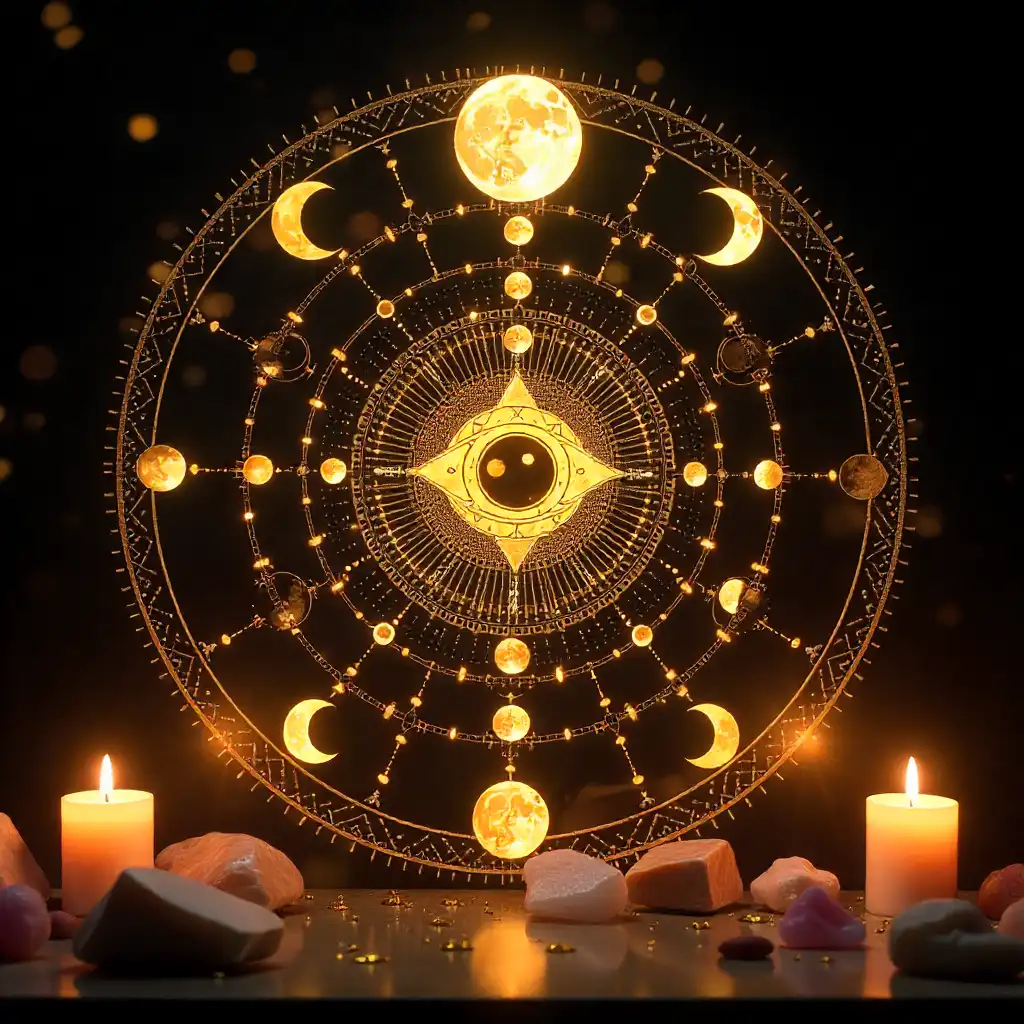
When Manifestation Becomes Marketing
Manifestation once meant quiet trust in divine order. Now, it means curated Pinterest boards, 1,100 dirham “abundance workshops,” and personalized prosperity candles promising “financial ascension.”
I attended one of these workshops last year at a five-star hotel in Downtown Dubai. Forty women, most in athleisure and designer accessories, gathered to learn how to “call in wealth.” We journaled. We visualized. We repeated affirmations about deserving abundance.
The instructor, a wellness influencer with 380K followers, spoke confidently about quantum physics and energy frequencies. It felt empowering. It also felt deeply, uncomfortably capitalist.
“Manifestation has become the modern prosperity gospel,” says Dr. Amira Khalil, a cultural studies professor at the American University of Sharjah who has researched spiritual commodification. “It places cosmic responsibility on the individual – not just to heal, but to succeed financially. And in doing so, it turns spiritual growth into a premium product. The message is: if you’re not wealthy, healthy, and thriving, you haven’t manifested correctly. It’s spirituality weaponized as meritocracy.”
At luxury wellness expos in Dubai and Doha, companies now offer custom “vibration analysis” and crystal consultation services that match your “wealth frequency.” Boutiques sell “5D ascension packages” and “quantum abundance activations.” In London, wellness influencers host manifestation masterclasses that promise to unlock your “Rich Girl Era.” What used to be prayer is now a sales funnel.
Zara, 23, the sustainable fashion activist I know, attended one of these events and left disturbed. “The entire thing was about attracting money, luxury, success. Nothing about compassion, service, or actual spiritual development. Just: visualize the Chanel bag, align your frequency to receive it. It was grotesque.”
But is it? Or is it just spirituality meeting its moment in late-stage capitalism, doing what everything else does: adapting to market demands?
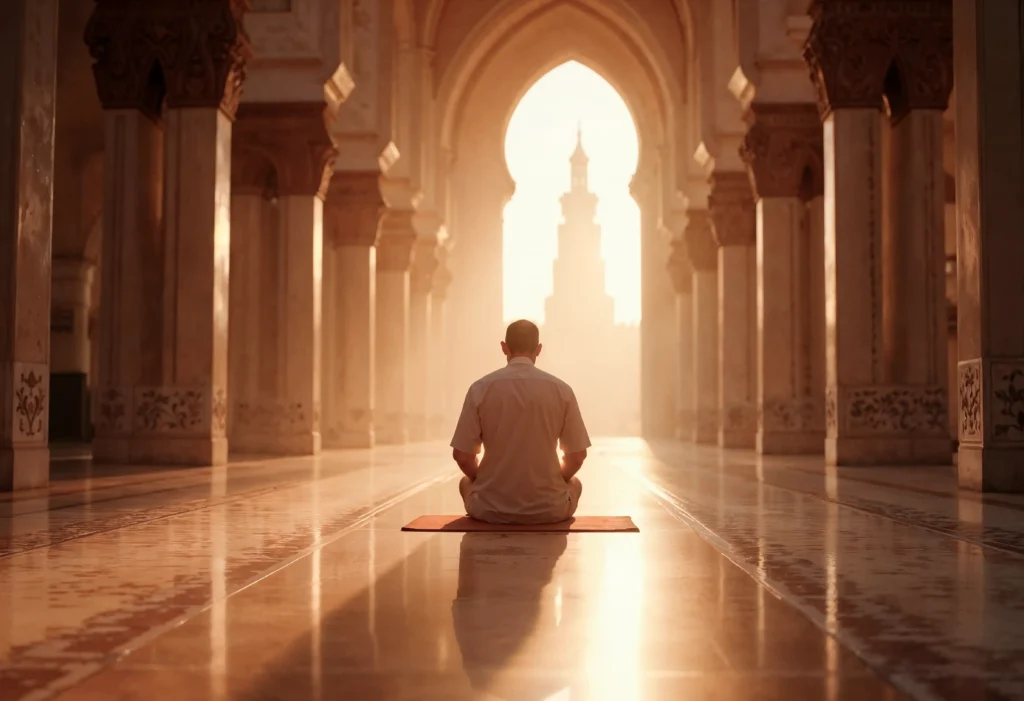
The Aesthetic of Enlightenment
Here’s what I keep coming back to: there is something almost poetic about how our search for the divine has become beautifully packaged. And perhaps that’s exactly why it’s working.
Luxury spirituality offers aesthetics that genuinely soothe the nervous system. In a chaotic, overstimulating world, beauty becomes a portal. A rose quartz sphere on a bedside table may not guarantee emotional healing, but it looks like softness. A mala bead bracelet may not dissolve karmic patterns, but it feels like intention. Lighting bakhoor or Palo Santo, regardless of Instagram, creates a moment of ritual in days that otherwise blur together.
For the modern woman – overstimulated, overworked, spiritually hungry – beauty can be a legitimate pathway back to the self. The question is whether it becomes the destination or remains a doorway.
Mira, 26, the café owner, describes her relationship with spiritual aesthetics thoughtfully. “I light candles, I have crystals, I design my space to feel calming. But those are tools, not the practice itself. The practice is sitting in silence even when it’s uncomfortable. The practice is showing up for myself when there’s no one watching and nothing is pretty.”
This is the critical distinction: aesthetics as gateway versus aesthetics as replacement.
Sara, 21, admits she fell into the trap. “I curated this entire spiritual aesthetic on Instagram. Crystals, oracle cards, moon rituals. It looked so beautiful. People would comment about how zen my life seemed. But I was performing spirituality, not practicing it. I was more concerned with how my altar was photographed than what it meant to me. That realization was humbling.”

Dubai, Where Tradition Meets Transcendence
Dubai is emerging as one of the world’s most fascinating laboratories for spiritual materialism, and the contradictions are dizzying.
This is a city where traditional Islamic values of reflection and prayer naturally coexist with futuristic wellness concepts. Breathwork studios operate near mosques. The oud-scented air carries memory of ancient rituals even as residents attend chakra-balancing sound baths in luxury hotels. Ramadan’s spiritual discipline exists alongside $500 full moon activation classes on Kite Beach.
Here, spirituality is not disappearing. It is diversifying, multiplying, and yes, monetizing at an extraordinary rate.
There are Emirati women burning bakhoor at home while attending cacao ceremonies on weekends. There are expats who begin mornings with Fajr prayer and end evenings with Kundalini yoga. This is the duality of modern spiritual identity: reverence and reinvention, coexisting in ways that would have been unimaginable a generation ago.
Fatima, 24, an Emirati university student, navigates this duality daily. “I pray five times a day. That’s my spiritual foundation. But I also go to yoga, I sage my room, I believe in energy. My grandmother thinks I’m confused. But I don’t see it as confusion. I see it as expansion. Why can’t I honor my Islamic practice and also explore other ways of connecting to the divine?”
It’s a fair question. But it’s also complicated by the commercial apparatus that has grown around these spiritual explorations.
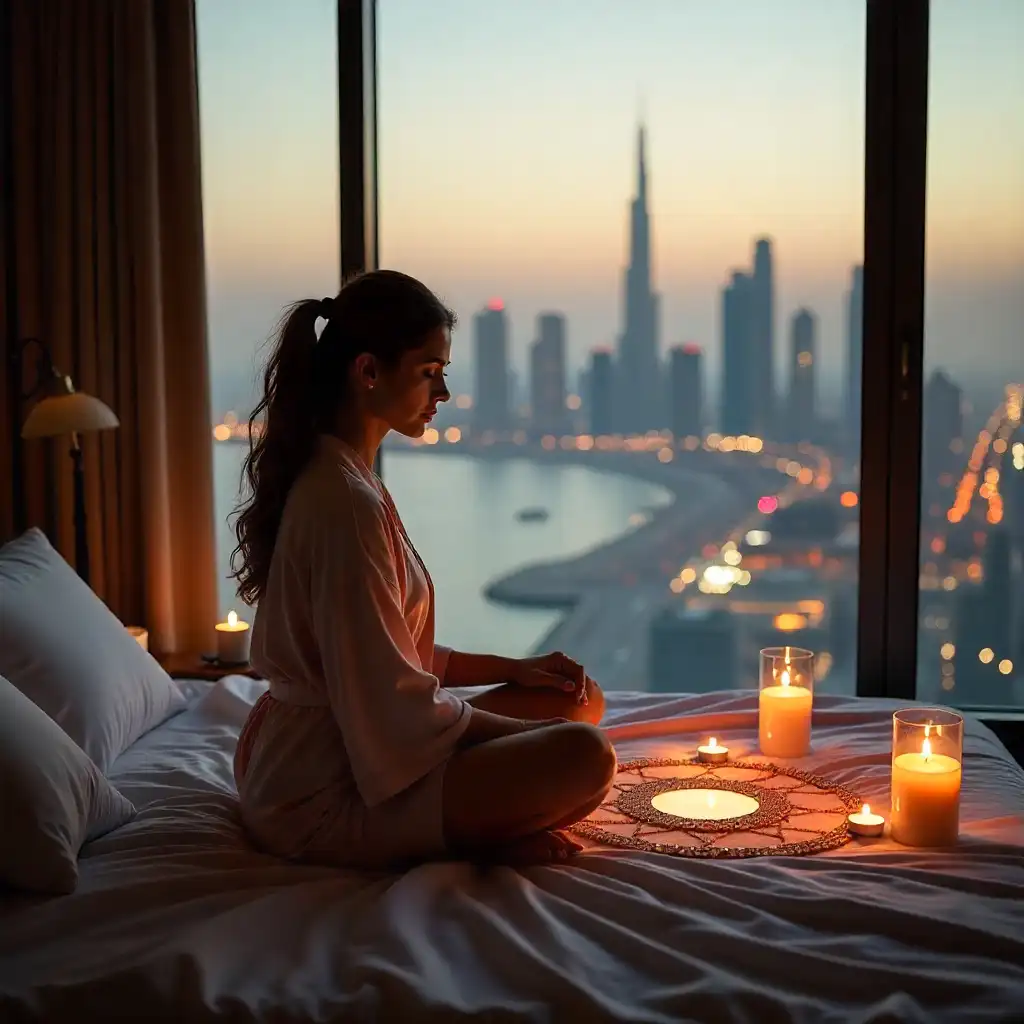
“The UAE has become a hub for wellness tourism and spiritual entrepreneurship,” notes Khaled Mansour, a business consultant who advises wellness brands in the region. “The purchasing power here is extraordinary. The appetite for self-improvement is enormous. And there’s cultural openness to blending traditions. For businesses, it’s the perfect market. For consumers, it’s both opportunity and risk.”
The risk is this: when spirituality becomes indistinguishable from luxury consumption, it stops challenging you and starts flattering you. Real spiritual practice is supposed to be uncomfortable. It’s supposed to strip away ego, confront shadow, and demand honesty. Luxury spirituality, by contrast, tells you you’re already perfect. You just need the right crystals to reflect it.
The Uncomfortable Questions
Let me ask what I keep asking myself: When does spiritual seeking become spiritual materialism?
When you buy a crystal because you genuinely believe in its metaphysical properties, or because it’s beautiful and everyone else has one?

When you attend a sound bath because you need deep nervous system regulation, or because it’s the trendy thing to do and you’ll feel left out if you don’t?
When you post about your morning ritual because it helps you process and connect with community, or because spiritual content performs well and you’ve built an identity around being “that girl”?
These questions have no clean answers. Motivation is messy. Most of us operate from mixed intentions we don’t even fully understand ourselves.
But the questions matter because they reveal something crucial: you cannot outsource your healing.
You cannot buy awakening. You cannot subscribe to enlightenment. You cannot purchase presence. Luxury spirituality gives you the language of elevation, the aesthetics of alignment, the signifiers of consciousness. But it does not—cannot—give you the actual work.
Dr. Al-Rashid is blunt about this: “Spirituality requires discomfort. It requires sitting with yourself when there’s nothing to distract you, nothing to buy, nothing to perform. The wellness industry profits from avoiding that discomfort by constantly offering you the next thing: the next crystal, the next course, the next guru.
But healing happens in stillness, in silence, in spaces you can’t monetize.”
True Practice in a Material World
So where does this leave those of us who genuinely want spiritual growth but live in a world where spirituality has been commercialized?
I don’t have perfect answers, but I have observations from my own messy journey:
The tools can be helpful. Crystals, candles, journals – these aren’t inherently problematic. They become problematic when we confuse them with the practice itself. Use them as reminders, as anchors, as aesthetic support for the real work. But know that the real work is internal, invisible, and free.
Beware of spiritual bypassing. When “good vibes only” and “high vibration” become excuses to avoid processing difficult emotions or confronting systemic issues, spirituality becomes escapism. Real practice includes shadow work, grief, anger, and the full spectrum of human experience.
Question the source. Is this teacher/brand/product asking you to trust yourself, or to depend on them? Authentic spiritual guidance points you inward. Spiritual capitalism keeps you coming back for more purchases.
Practice offline. If your spiritual life only exists when documented, it’s performance, not practice. Find rituals that are just for you. Moments that don’t need to be seen to be valid.
Remember: simple works. Sitting in silence costs nothing. Breathwork is free. Walking in nature is accessible. Prayer doesn’t require props. The most profound spiritual practices are usually the least photogenic.
Ayesha, 23, who volunteers with an NGO, found her way back to authentic practice after spending a year deep in wellness culture. “I was spending hundreds every month on spiritual stuff. Then I went on a meditation retreat where they took our phones and gave us nothing but cushions and silence.
It was brutal. But it was real. I realized I’d been using all the products and classes to avoid actually being with myself. Now I practice daily, and my only tools are a prayer mat and intentional stillness. That’s it.”
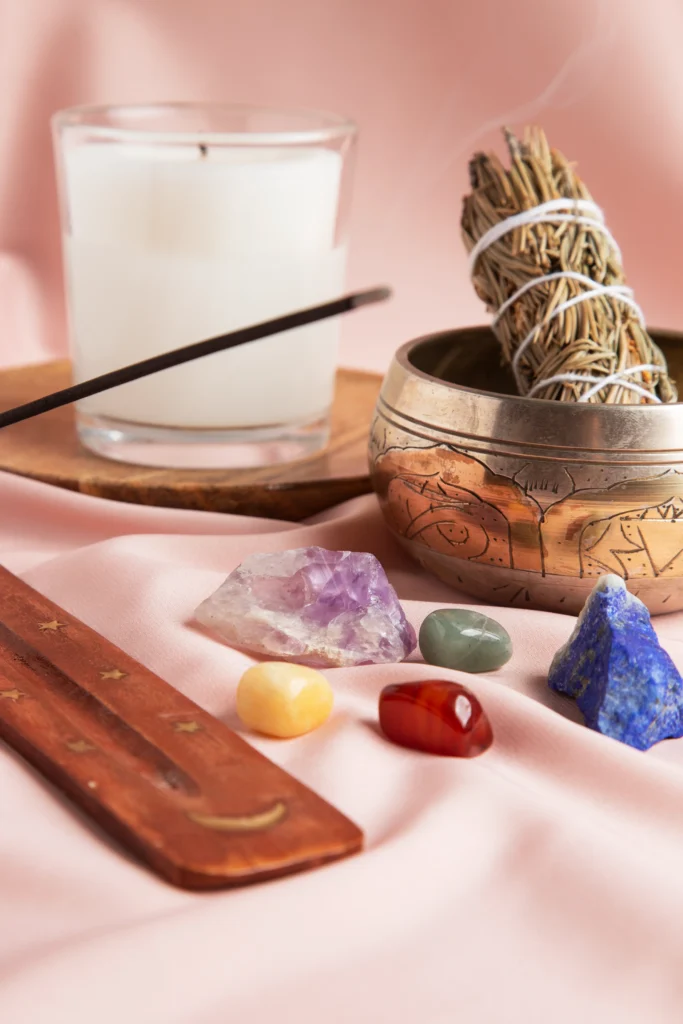
The Sacred Market
Here’s my conclusion, uncomfortable as it is: spiritual materialism is here to stay. The market has recognized that people are spiritually starving, and markets do what markets do—they create products to meet demand.
We can lament this. We can critique it. We should critique it. But we also have to navigate it, because most of us aren’t renouncing modern life to live in monasteries.
So the question becomes: Can we engage with spiritual materialism without being consumed by it?
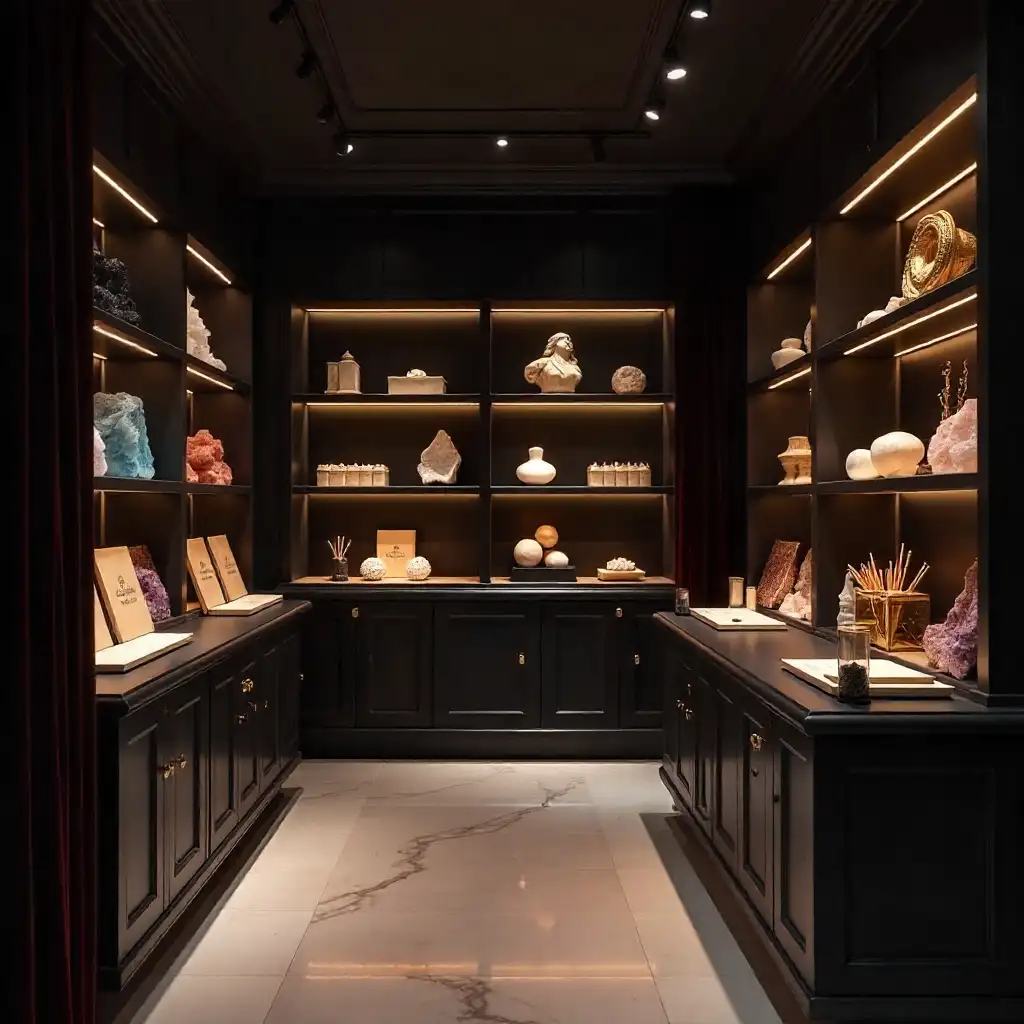
Can we appreciate beauty without worshiping it? Can we use tools without becoming dependent on them? Can we learn from teachers without giving away our power? Can we share our journey online without reducing it to content?
I think we can. But it requires constant vigilance, brutal honesty, and the willingness to ask ourselves repeatedly: Am I practicing spirituality, or performing it? Am I deepening my connection to the divine, or deepening my collection of spiritual merchandise?
Because in the end, spirituality is not an aesthetic. It is an excavation. It asks you to sit with discomfort, not scent it with lavender oil. It asks for surrender, not subscription. It asks you to strip away identities, not curate them.
The crystals are beautiful. The rituals are meaningful. The language of energy and alignment can be genuinely helpful. But they are doors, not destinations. And the question each of us has to answer is: Will we stop at the crystal, or will we follow it inward?
Because the marketplace will always be there, offering you the next thing. But the sacred is within you, free, waiting, requiring nothing but your presence.
Maybe that’s the most subversive spiritual practice of all: learning to need less, not more. To find the divine in silence, not in shopping. To recognize that you are already whole, exactly as you are, and no purchase can make you more so.
That realization doesn’t photograph well. It doesn’t trend. It doesn’t sell. But it’s true.
And truth, in the end, is the only thing worth manifesting.
THE SPIRITUAL ECONOMY
By The Numbers:
- $5.6 trillion: Global wellness economy (2024)
- $120 billion: Spiritual wellness sector globally
- 287%: Growth in UAE wellness market since 2019
- $50 to $500: Average cost of sound bath session in Dubai
- $180 to $2,000: Range for manifestation workshops
- $40 to $4,000: Crystal pricing in Dubai boutiques
- 63%: Percentage of luxury consumers who consider “wellness” essential (McKinsey, 2024)
Top Spiritual Materialism Categories:
- Crystals and gemstones: $1.2B globally
- Manifestation courses and coaching: $890M
- Spiritual retreats and experiences: $2.1B
- Oracle/tarot decks and spiritual books: $320M
- Meditation apps and subscriptions: $4.2B
- Wellness tourism: $639B (broader wellness travel)
UAE Market Specifics:
- Dubai hosts over 80 luxury wellness centers
- Average spend on wellness per capita in the UAE: $2,400 annually
- Spiritual services growing 45% year-over-year
- 73% of UAE wellness consumers are women aged 25 to 45
REAL PRACTICE VS. SPIRITUAL PERFORMANCE
Signs You’re Practicing (Not Performing):
✓ You maintain rituals even when no one is watching
✓ Your practice includes discomfort, not just aesthetics
✓ You can sit in silence without needing to document it
✓ Your spiritual growth is measured by internal shifts, not external validation
✓ You question teachers and teachings, don’t just follow blindly
✓ You’re willing to do the unglamorous work (shadow work, grief processing)
✓ Your spirituality includes service, compassion, and facing difficult truths
✓ You don’t need to buy something new to feel spiritually progressing
Signs You’ve Slipped Into Spiritual Materialism:








Neither is absolute. Most of us fluctuate. The key is honest self-assessment.



